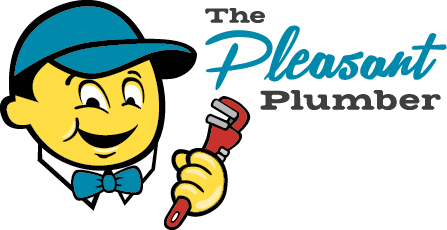If you haven’t prepped your home for winter, it’s never too late. Many homeowners have started preparing the yard for snow and pulled their winter things out of storage, but have you gotten around to preparing your home plumbing yet?
The colder weather is very prone to wreaking havoc on your pipes and fixtures. Like other areas of the house, it pays to get your house prepped for the cold to help prevent damage and keep your home intact until spring returns.
Here’s a list of things you can do to get the plumbing ready for the cold.
1. Find your main shutoff valve
In case of emergencies, one of the most useful bits of information is knowing where the main shutoff valve is. This ensures you’re more prepared to deal with a burst pipe. Shutting off the water is an effective way of limiting damage before emergency plumbing arrives to help. It is typically located near the water meter, often the basement or crawlspace.
If you’re leaving the house for a few days, it also helps to turn off the water at its source. In case any pipes crack while you’re gone, shutting off the main valve will help you avoid additional damage.
2. Insulate the pipes
One of your first lines of defence against winter plumbing problems is insulating your pipes. If it gets cold enough, water in the pipes is liable to freeze and expand, causing the pipes to burst.
To prevent water damage to the house, wrap the pipes in insulating material to keep them and the water inside warm. Pay particular attention to pipes in unheated areas as these are the ones most likely to freeze. Visit the local hardware store to get some inexpensive insulation; measure your pipes first to make sure you get them in the right size. If it gets especially cold, you may also want to get some heating tape to give the pipes some additional warmth.
3. Drain all your faucets
Any water left in the pipes is at risk of freezing when the temperature drops, so it’s a good idea to drain the water from the pipes. Outdoor pipes and faucets are particularly at risk, as they’re more exposed to the cold. Turn off all these faucets at the shutoff valves first, then open the faucets and the bleeder caps to get all the water out of the pipes. To be on the safe side, leave the bleeder caps open and put a bucket underneath to catch any drips. You can also do the same for your indoor faucets.
After shutting off the main water supply, drain the water from the faucets. The water main delivers pressurized water to your house, so make sure you do this step only after shutting off the water. It’s usually a good idea to call the pros if you need help with this step. Calling for professional home plumbing services is a great way to ensure you’re doing the job safely and minimizes any risk of damage to the surroundings.
4. Let the faucet drip
Normally, you don’t want your faucet to drip to save water; but in winter, deliberately letting the faucet drip can prevent serious damage. On nights when the temperature drops below freezing, turn the faucets on just enough so they drip water slowly and steadily. This method works for all your faucets but is especially useful with exterior faucets which are at a higher risk of damage due to subzero temperatures.
Leaving the tap running a little keeps water moving continuously so it doesn’t freeze in the pipes. The flow also eliminates any pressure that may build up between the faucet and an ice block. Even if the water freezes, the pipes are less likely to burst.
5. Disconnect all the outdoor hoses
Aside from faucets, it’s also a good idea to take care of your hoses before it starts getting really cold. Disconnect your hoses and store them safely in the garage until it gets warm again. Water left in the tubes can still freeze, so drain the hoses before putting them away.
Removing the hoses also prevents ice from backing up the pipes, protecting them from getting cracked. While you’re at it, you can also invest in other additions that can protect your pipes and faucets. Install hose bib covers to prevent your hose bibs from freezing during the night. A cover can slow down heat loss and protect them from damage.
6. Adjust your indoor temperature
Keeping a constant temperature is a simple way of winterizing your plumbing by preventing the indoor pipes from freezing. Bypass your thermostat’s normal settings to ensure you can maintain warmer, more consistent temperatures inside.
You should keep the temperature at a point just high enough to ensure the water in the pipes stays liquid. Consider investing in a smart thermostat to make it easier to keep your inner temperature at optimal warmth. While you’re at it, you can also take steps to help the warmer air do its job. Open the cabinets below the sinks to let the air circulate and keep those pipes warm.
7. Seal air leaks
Cracks in the walls and doors are a common cause of lost heat in many homes. Cold air can make its way into the house through the cracks, bringing the temperature low enough to freeze the pipes. Inspect the exterior of the house and seal any cracks you find to ensure the house is insulated.
There are also other critical areas of the house that can let in cold air that need your attention, like the crawlspaces and basement windows. Check these areas for any cracked windows or worn insulation and fix them as soon as possible.
8. Clean the gutters
Another aspect of winterizing your house plumbing is making sure the gutters stay clean and clear. The gutters’ job is to help divert water when it rains or when the snow melts. Clear gutters have plenty of benefits. It ensures that water flows away from the house. Blocked gutters can lead to water seeping over the side, where it can flood the basement.
Make sure the gutters are clear of any leaves, branches, or ice dams that could keep the water from flowing. After fall, it’s not uncommon for leaves and other debris to build up, so take the time to take care of this chore early. While you’re at it, make sure the gutters deposit the water far enough from the house. Consider adding some extensions to the downspout.
Winterizing your plumbing is a vital part of preparing the house for winter, but sometimes you need a helping hand. The Pleasant Plumber Inc. provides 24-hour plumbing assistance to assist whenever you need it. Give us a call now at (204) 930-9630 for quality assistance when you need it most.





